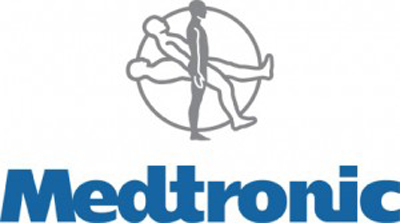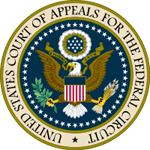[author: Kevin E. Noonan]
Five years ago, the Supreme Court abrogated (in a footnote) the Federal Circuit's "reasonable apprehension of suit" standard governing when a plaintiff could bring a declaratory judgment suit against a patentee, typically for non-infringement and/or invalidity or unenforceability. The policy reason for the decision was reasonable, particularly for a Court caught up in the zeitgeist that patents harm innovation; like the Court in the 1940's, this Court is more concerned with keeping the patent genie in the innovation bottle than recognizing the importance of patents in promoting disclosure (and consequently promoting innovation). The policy consideration motivating the Court followed the rationale in Lear v. Adkins two generations before: that a licensee is the party most motivated to invalidate an invalid patent. The decision eliminated the Hobson's choice created for licensees under the Federal Circuit's standard, of either continuing to pay royalties on an invalid patent or one they did not infringe, or refusing to pay and run the risk of being liable for treble damages, attorney's fees, and an injunction.
 But no matter how reasonable the Court's rationale, it has created consequences that fall, in the first instance, to the Federal Circuit to consider and sort out. That process continues in Medtronic Inc. v. Boston Scientific Corp. The case involved a declaratory judgment action relating to devices for cardiac resynchronization therapy, a treatment that addressed conditions like congestive heart failure that cannot be treated using conventional implanted defibrillators or pacemakers. The devices are protected by Reissue Patent Nos. RE38,119 and RE39,897. Medtronic sublicensed the '119 reissue patent from Eli Lilly & Co., a predecessor-in-interest as licensee of this patent from the assignee, Morowski Family Ventures, Inc. (MFV, a declaratory judgment defendant here). The sublicense (which predated the MedImmune decision) permitted Medtronic to challenge the '119 reissue patent (and any related patents such as the '897 reissue patent) while depositing royalty payments into escrow. This arrangement was superseded by a Litigation Tolling Agreement that required MFV to identify Medtronic products that were purportedly "covered" by the reissue patents. MFV exercised this right and Medtronic dutifully instituted a declaratory judgment action. Another aspect of the Agreement important to the outcome of this case is that MFV was precluded from filing a patent infringement counterclaim because Medtronic remained a licensee in good standing (i.e., these actions did not constitute a breach of the Agreement).
But no matter how reasonable the Court's rationale, it has created consequences that fall, in the first instance, to the Federal Circuit to consider and sort out. That process continues in Medtronic Inc. v. Boston Scientific Corp. The case involved a declaratory judgment action relating to devices for cardiac resynchronization therapy, a treatment that addressed conditions like congestive heart failure that cannot be treated using conventional implanted defibrillators or pacemakers. The devices are protected by Reissue Patent Nos. RE38,119 and RE39,897. Medtronic sublicensed the '119 reissue patent from Eli Lilly & Co., a predecessor-in-interest as licensee of this patent from the assignee, Morowski Family Ventures, Inc. (MFV, a declaratory judgment defendant here). The sublicense (which predated the MedImmune decision) permitted Medtronic to challenge the '119 reissue patent (and any related patents such as the '897 reissue patent) while depositing royalty payments into escrow. This arrangement was superseded by a Litigation Tolling Agreement that required MFV to identify Medtronic products that were purportedly "covered" by the reissue patents. MFV exercised this right and Medtronic dutifully instituted a declaratory judgment action. Another aspect of the Agreement important to the outcome of this case is that MFV was precluded from filing a patent infringement counterclaim because Medtronic remained a licensee in good standing (i.e., these actions did not constitute a breach of the Agreement).
The District Court decided that the patents were neither invalid nor unenforceable and not infringed. An issue in the lawsuit was which party bore the burden of proving infringement. This issue was relevant because it affected the impact of the evidence; specifically, the District Court's decision was based on the failure of MFV's expert to "consider 'each limitation of each asserted claim in comparison to each accused product before rendering his infringement opinions,' and that defendants 'failed to prove literal infringement by a preponderance of the evidence,'" because according to the lower court the burden of proving infringement always rests on the patentee. That decision provided MFV's basis for appeal to the Federal Circuit.
 The Federal Circuit reversed, in an opinion by Judge Linn joined by Judges Lourie and Prost. The panel recognized the conundrum created by the application of the Supreme Court's MedImmune decision to the situation. The opinion begins with a recognition that this situation is different from the "conventional" declaratory judgment action, where a patentee would be able to file a patent infringement counterclaim. This is relevant to the case before the Court because the typical situation also constitutes the fact pattern in the prior precedent, making that precedent inapposite for the District Court (or the panel) to rely upon for its decision (this is precisely the precedent the District Court did rely upon, of course). In addition, the Agreement required Medtronic to file a declaratory judgment action, and accordingly the panel held that the burden should fall on Medtronic to "prove that at least one limitation of each claim of MFV's patents is not met by Medtronic's products."
The Federal Circuit reversed, in an opinion by Judge Linn joined by Judges Lourie and Prost. The panel recognized the conundrum created by the application of the Supreme Court's MedImmune decision to the situation. The opinion begins with a recognition that this situation is different from the "conventional" declaratory judgment action, where a patentee would be able to file a patent infringement counterclaim. This is relevant to the case before the Court because the typical situation also constitutes the fact pattern in the prior precedent, making that precedent inapposite for the District Court (or the panel) to rely upon for its decision (this is precisely the precedent the District Court did rely upon, of course). In addition, the Agreement required Medtronic to file a declaratory judgment action, and accordingly the panel held that the burden should fall on Medtronic to "prove that at least one limitation of each claim of MFV's patents is not met by Medtronic's products."
The panel found unavailing not only the prior precedent noted above but also Medtronics' argument that MFV should be required to establish infringement as a consequence of its identification of Medtronics' products that purportedly infringed the reissue patents-in-suit. In the "post-MedImmune world," according to the Court, the conventional apportionment of burdens fails under these circumstances. The better analysis is to require the "burdens of pleading and proof" to be "assigned to the plaintiff who generally seeks to change present state of affairs and who therefore naturally should be expected to bear the risk of failure of proof or persuasion," citing Schaffer ex rel. Schaffer v. Weast, 546 U.S. 49, 56-57 (2005) (quoting 2 J. Strong, McCormick on Evidence § 337, p. 412 (5th ed. 1999)). While this burden would not shift in a conventional patent infringement counterclaim (and, indeed, that claim would be waived if not pled), cases mandating this result "only stand for the rote proposition that when there is a direct claim for infringement, in a complaint or by way of counterclaim, the patentee cannot prevail without proving all the elements of infringement under 35 U.S.C. § 271" (and were decided prior to the Supreme Court's MedImmune decision). Here, Medtronic is seeking relief, according to the panel, and patentee MFV is precluded by the license from asserting a patent infringement counterclaim, while also requiring MFV to identify allegedly infringing Medtronic products. In contrast to Medtronic, which "already has a license; [] cannot be sued for infringement; [] is paying money into escrow; and [] wants to stop," MFV "seeks nothing more than to be discharged from the suit and be permitted to continue the quiet enjoyment of its contract." Under these circumstances, "it is Medtronic and not MFV that is asking the court to disturb the status quo ante and to relieve it from a royalty obligation it believes it does not bear" and thus Medtronic that should be required to "present evidence showing that it is entitled to such relief." And here, where neither party introduced any evidence regarding infringement or noninfringement there is no principled reason why Medtronic should receive the declaration of noninfringement it seeks."
The opinion also addressed the equities of this burden allocation:
[T]he one claim for relief sought in this case is the claim Medtronic asserts to be relieved from liability under the license by having a court declare the products in question to be noninfringing. Medtronic is the party seeking this relief and Medtronic must bear the burden of proving it is entitled to such relief. A contrary result would allow licensees to use MedImmune's shield as a sword -- haling licensors into court and forcing them to assert and prove what had already been resolved by license. Because the declaratory judgment plaintiff is the only party seeking the aid of the court in the circumstances presented here, that party must bear the burden of persuasion. Therefore, this court holds that in the limited circumstance when an infringement counterclaim by a patentee is foreclosed by the continued existence of a license, a licensee seeking a declaratory judgment of noninfringement and of no consequent liability under the license bears the burden of persuasion.
On this basis the Federal Circuit remanded back to the District Court. In addition, the opinion reversed certain claim construction decisions by the District Court that were the basis for the finding that the claims were not invalid and remanded for further proceedings based on the panel's construction of the claim.
While it is likely that this case presents a unique situation between the parties, licensees under MedImmune should often (if not frequently) be in a position where the patentee is foreclosed from asserting a patent infringement counterclaim (because, inter alia, the licensee continues to pay royalties in escrow). Unless a licensee/declaratory judgment plaintiff brings suit solely on the questions of invalidity or unenforceability, under the precedent enunciated in this case licensees will bear the burden of establishing non-infringement.
Medtronic Inc. v. Boston Scientific Corp. (Fed. Cir. 2012)
Panel: Circuit Judges Lourie, Linn, and Prost
Opinion by Circuit Judge Linn